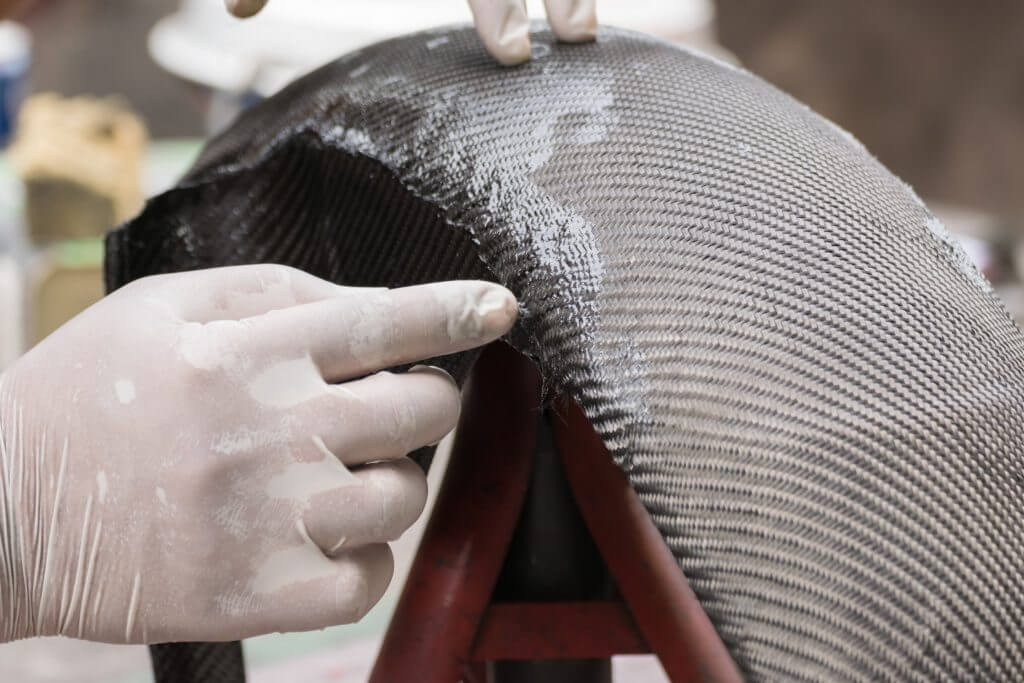Look around you. Chances are that there are at least five different composites around you. They are on your walls, in and on your cars, on your desk, and everywhere else. Our lives depend on these materials called composites. And we dedicate this piece to helping you understand these versatile materials.
In this article, you’ll learn:
- What composites are
- The classifications of composites
- Applications of composite materials
- Advantages of composites
- Composite materials FAQs, and
- How to ship liquid components used in composite production

What Are Composites?
Composites are materials that were made from the combination of two or more materials. These constituent materials often have varying physical and chemical properties. And combining them to make a composite material gives the produced material the strengths and properties of the constituent materials.
The history of composites goes as far back as the 3400 B.C, and they remain widely used even today. And the major reason behind our unrelenting use of composite materials is that the materials are usually more suited for applications where the constituent elements would have been less suitable. For instance, you can make a composite product stronger, more flexible and insulating, or even harder, depending on the application.
The Two Phases of Composite Constituents
The constituent elements of a composite material fall into two broad phases; the matrix phase and the dispersed phase. The matrix phase is often the core material that holds every other material together. It bears and transfers the bulk of the stress of the load on the material. While the dispersed material is chosen based on the final product in mind. It could be a metal (for its strength or stability), a polymer (for more elasticity or tensile strength), or a ceramic (for more fracture resistance).
Classifications of Composites
There are two major ways to classify composites. The first classification is according to the matrix phase, and the other is according to the dispersed or reinforcement phase.
Classification Based on the Matrix Material
A lot of constituent types fall into this category, with the most common ones being:
- Ceramic Matrix Composites (CMCs)
- Metal Matrix Composites (MMCs)
- Organic Matrix Composites (OMCs)
But what exactly do these composite types do?
1. Ceramic Matrix Composites (CMCs)
Ceramics are characterized by their impressive corrosion resistance, high melting points and compressive strength, and their enduring stability under high temperatures. These properties make ceramic matrix composites some of the most turned to matrices for high-temperature areas of applications. The composites are usually made through the embedding of ceramic whiskers or fibers into the ceramic matrix. Some common reinforcing materials in ceramic matrix composites are silicon carbide, alumina, alumina-silica, and carbon. And common examples of ceramic matrix composites include carbon/carbon, silicon carbide/silicon carbide, carbon/silicon. The material before the “/” is the reinforcing materials while the material after is the matrix.
2. Metal Matrix Composites (MMCs)
Metal matrix composites are popular for their strength, stiffness, and resistance to fracture. Because of the durability of metals in high temperatures and corrosive environments, MMCs are preferred to organic matrix composites. However, the reinforcing materials being used in combination with metal matrices must be just as non-reactive and as high-temperature-stable as the metal matrices themselves.
Although most metals and their alloys make good matrices, the most commonly used are titanium, magnesium, and aluminum. The common reinforcing materials used in combination with metal matrices are oxide and carbide ceramics, and other metals, such as molybdenum, lead, and tungsten.
3. Organic Matrix Composites (OMCs)
Organic matrix composite comes in two subcategories; polymer matrix composites (PMCs) and carbon matrix composites. And of these two, polymer matrix composites are more popular.
The easy processability of polymers, their impressive mechanical properties, and their light weights make them suitable for various composite applications. Thermosets and thermoplastics are two main kinds of polymers that serve as matrix materials in composites. Reinforcing materials that go with these polymer matrices are carbon nanotubes, fibers, and graphene.
Classification Based on the Reinforcement Material
When you view the reinforcement material under the microscope, composites break into further subcategories, such as:
But what are they, and what are their applications?
1. Fiber-reinforced composites
Fiber-reinforced composites contain just three categories of constituent materials. The first two are the fiber, which serves as the dispersed phase, and the matrix. Here, the composites are formed by embedding the fiber into the matrix. And the final category is called the interface, working at the interfaces between the matrices and the dispersed phases.
Examples of materials that are used for fiber reinforcement in composite materials are molybdenum, carbon, asbestos, polyester tantalum, quartz, and tungsten. Materials that pass for the matrices of fiber-reinforced composites are often resins. Resins are chosen because they have a wide range of uses. The relatively low cost of resins is also an advantage. Examples of these resin materials are phenolic, polyester, vinyl ester, epoxy, and polyurethane.
Some non-resin materials can also be used as matrices for fiber-reinforced composites, but they aren’t as popular as their resin counterparts. And the common applications of these non-resin materials are in higher temperatures areas that require higher performance. Examples of these uncommon materials are magnesium, aluminum, silver, titanium, lead, and ceramics.
2. Laminar Composites
Laminar composites contain constituent materials with varying fiber orientations. These materials are arranged in layers and glued together to get a final composite product that is stronger in different directions than the individual materials. Unlike the other categories of composites, laminar composites don’t always have matrix phase and dispersed phase constituents.
The most common example of laminar composite is plywood. The tires on vehicles are made by the laminar composition of carbon black and fabrics containing rubber. Snow skis form a laminar structure with a metal layer and a phenolic plastic layer. Another example is the windshield glass that has glass layers on either side of a transparent plastic sheet.
3. Particulate Composites
Particulate composites make up the third category, which involves the dispersal of particles in the bulk of the matrix. These dispersed particles could be in the form of powder or flakes, and they don’t have to be in a specific shape or configuration. A common example of particulate composite is concrete.
Applications of Composite Materials
The following are the most common areas of application of composite materials:
1. Aerospace
Materials used in modern aerospace would be significantly less efficient without composites. Various parts of an aircraft contain composites, including the tail, wings, rotors, and propellers. Examples of composites that are used here are fiberglass-reinforced aluminum and carbon fiber. These two materials make sure aircraft are strong enough to withstand the pressure bombardment in the sky, yet light enough to fly. These materials also have high resistance to rust and corrosion, making them suitable for aerospace.
2. Construction and Building Materials
Various materials we use in constructions are composites. Thanks to their impressive strength-to-weight ratios and their relative inexpensiveness, composite materials are widely used in construction and building materials.
Examples of composite materials used in construction and building include fiber-reinforced cement shingles for long-lasting roofs. And the properties of fiber-reinforced panels that make them easy to clean and resistant to water put them on the top of the list of materials suitable for use as kitchen and bathroom walls.
3. Sports
Manufacturers are beginning to adopt more and more composite materials to increase the efficiency of their products. For instance, a baseball bat may be made with a wood or metal composite that is light, yet hard to break. The flexibility of some composite materials also makes them suitable for use in skis and surfboards. Other sports gears that contain composite materials are bicycle frames, balloon fabrics, parachutes, and polymeric foams used in motorcycle helmets.
4. Appliances
Most of the appliances you have and use in your home were made from composites. And many of them were not only chosen for their durability but also for their lightness and their design flexibility. Some common composites used in a lot of home appliances are fiberglass-reinforced composites, fiber-reinforced panels, and lumber. Examples of such appliances are power tools, handles, and trims. Others include equipment panels, dryers, refrigerators, ovens, knobs, kick plates, vent trims, and so many more.
5. Electrical and Electronics Industry
Thermoset composites have a lot of uses in the electrical and electronics industry. The reason is that these composites are strong and resist heat well. In addition, they have impressive electrical insulation and a low thermal expansion. They are also useful in protecting the signals being transmitted by your electronics from interference.
Common applications of thermoset composites in the electrical industry include microwave antennas, server rooms, arc chutes, control system components, substation insulators, switchgear, lighting components, and printed wiring boards, to mention a few.
6. Marine Industry
Whatever material that must be used in the marine industry must first be corrosion resistant because water encourages corrosion. Water also tends to soften materials that aren’t waterproof. Materials under constant exposure to water could also have their life spans shortened. As a result of these, preparing material for use in the marine industry can be quite tricky.
However, the availability of composites has provided us with a lot of options of materials for the marine industry. And just like in other applications, thermoset composites are some of the most common composite materials in marine application as well. Examples of marine products that contain these composites are railings, hulls, propellers, exhausts. Sonar domes, hatch covers, and bearings also have composites in them.
7. Farm
Even products used on the farm have composites in them. These composites can withstand the ever-changing and endless assaults of the weather across all seasons. They are also resistant to chemical corrosion which could happen in the presence of agricultural chemicals. Some of these farm products include cabinets, substructures, firewalls, engine covers, harvesters, plow hitches, trailer components, and electrical insulating elements.
Advantages of Composites
Although you may already have ideas of what the advantages of composites are, here’s some more:
1. High Strength
The high strength of composite materials makes them preferred materials for some applications over some commonly known strong materials like metal. Another advantage of composite materials over metals is that the strength of composite materials can be better controlled and modified. For instance, composites can be made to be strong in just one direction, while metals are always strong in all directions.
2. Lightweight
Compared to most of the materials they replace, composites are often lighter. The lightness of composites gives them immense advantages, such as greater fuel efficiency and greater traveling speeds.
3. Design Flexibility
It doesn’t cost much for manufacturers to mold composites into desired shapes and forms. Applications where aesthetics play huge roles often take advantage of this property. Examples of such applications are in skis, recreational boats, and surfboards. Fiberglass is a common composite used in these applications.
Similarly, there are so many constituent materials that can be combined into composites that are suitable for various purposes. As a result, there are a lot of composite options for manufacturers to design whatever they need.
4. Durable
Composites can be light, but they don’t compromise durability. Under proper care and maintenance, these composites last for decades. And the best part is that they don’t even cost much to maintain.
5. Cost-Effective
One property most individual materials possess before they are combined to form composites is relative inexpensiveness. And after we combine these constituents, what we have is a composite material that is relatively inexpensive, yet does the job effectively.
6. Low Thermal Conductivity
Many composites are poor conductors of heat. So, they often remain stable under extreme heat conditions.
Composite Materials FAQs
As far as composite materials are concerned, these are some of the most frequently asked questions:
1. What is a composite material?
A composite material comprises two or more materials that combine to offer superior properties than the individual constituents to the resulting composite.
2. What are the types of composites?
The most common types of composite materials are:
- Fiber-reinforced composites
- Carbon matrix composites
- Polymer matrix composites
- Ceramic matrix composites
- Metal matrix composites
- Particulate composites, and
- Laminar composites
3. How are composites different from alloys?
Although both are a mixture of at least two components, the difference between them is that alloys must have at least one metal in the mix. Composites, on the other hand, don’t need to have metals.
Composite Material Shipping
Although composites are mostly solids, a lot of liquid components go into the production processes of these materials. To keep up with the eternally high demand for composites, these liquid components must not be in short supply. And one of the best ways to ensure their steady supply is to hand over the supply chain of these liquid components to expert logistics companies. Not only will the company ship these products in bulk, but they would also play a crucial role in ensuring that you never run out of supply.
And this is where we come in.
Bulk Shipping of Liquid Components in Composites with Total Connection
Total Connection is a third-party logistics company that can stand as your company’s logistics department. We are experts at the bulk shipping of every industrial liquid material, including the liquid products needed for the production of composite materials. Our experience in this field spans over two decades, and we still keep getting better.
When you reach out to us through the quote form below, our experts will get in touch with you to offer you solutions that are best for your business needs and budget. And at the same time, we will never compromise on delivering a high-quality service.





